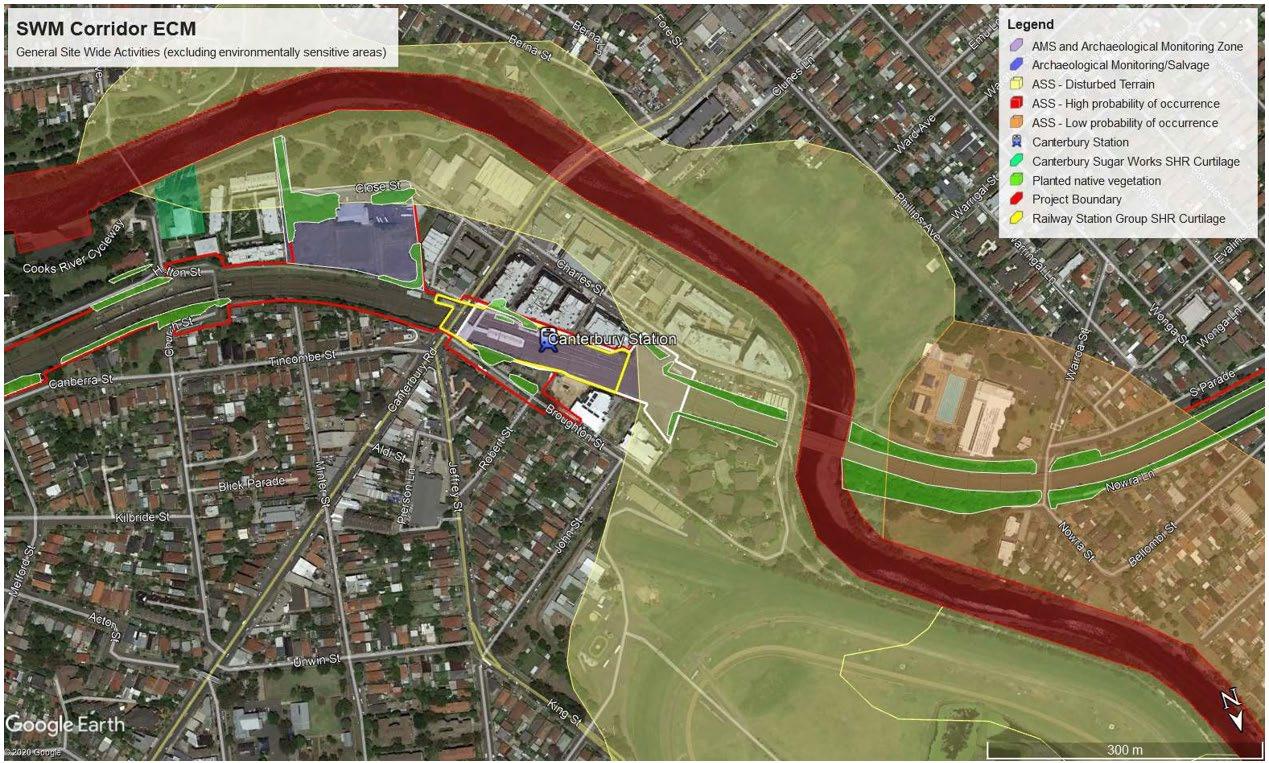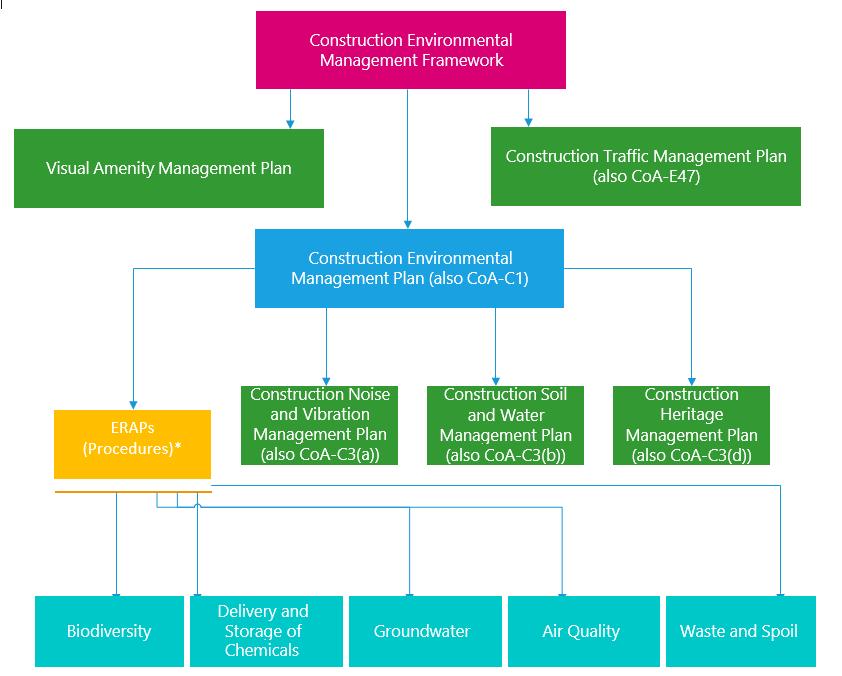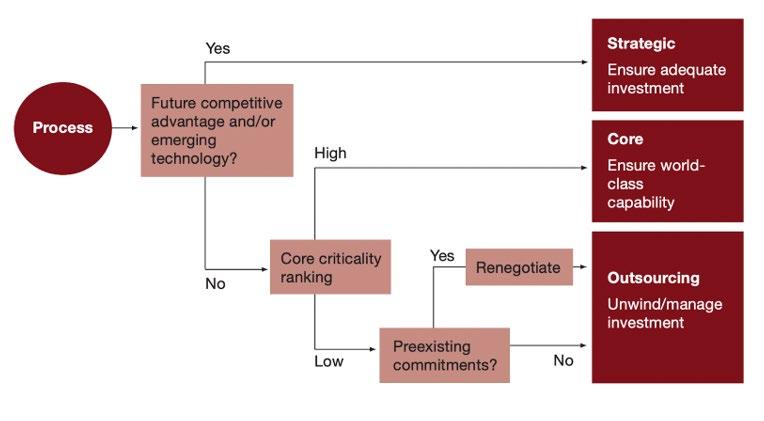
8 minute read
Table 6: Control Threshold Variance
Delay amount (Days)
Path impacted
>5 Critical path
Table 6: Control Threshold Variance
Action needed
Corresponding professionals and consultants take immediate analysis. Prompt corrective actions have to be taken in place. The change request is needed when corrective actions are unrealistic or inefficient.
2~5 Critical path
<2 Critical path
>6 Noncritical path
<=6 Noncritical path Prompt corrective actions have to be taken in place.
The team assembles to evaluate whether the adjustment is needed. Keep the delay under control to prevent further deterioration.
A serious warning level establishes. The project team keep close monitor to avoid the non-critical path turning into critical path.
A warning signal emerges. This delay has been marked for further monitoring and evaluation. Update site logs every two days.
If a team member believes a schedule modification is required, the Project Manager and the rest of the team assemble to discuss and evaluate the adjustment. The project team assesses which tasks are impacted, calculates the variation, and creates a list of potential. If the Project Manager determines that any modification exceeds the set thresholds or bounds, a change request will be sent to the Change Control Board (CCB). The Project Manager and Project Scheduler record the result of the schedule change request, keep the documents in the project repository, adjust the schedule to reflect the approved change and communicate the change and its implications to all stakeholders. A separate change request is filed for examination and approval if the project team believes a schedule re-baseline is required. Before being actionable, change requests must go through the Perform Integrated Change Control process.
4.6.4.1 Schedule Compression Techniques
When scope changes are not necessitated, two strategies are used to compress schedules: fast tracking and crashing.
Crashing is the compression technique utilised for the Project with the availability of more funding and the need to complete the project sooner than intended. Crashing aims to increase the project's resources to reduce the planned duration of project tasks (Project Management Institute, 2017). Additional resources are given specifically to the tasks connected with the project's critical pathway (e.g., additional resources, provided overtime, or monetary compensation). Crashing is utilised in the work packages that cannot be carried out in parallel in this project, such as 1.3.4 Demolition and 1.3.5 Platform Re-leveling and Installation of Screen Doors in WBS
Fast tracking only works when tasks can be overlapped to reduce the critical path project duration. For example, 1.3.5 Platform Re-leveling and Installation of Screen Doors with 1.3.6 Construction of New Lifts can be performed in parallel for at least a portion of their duration. However, when the schedule is accelerated, using leads usually demands more coordination efforts between the activities involved and raises quality risk. Therefore, close and more frequent monitoring will be applied in the compressed schedule plan.
5.0 Project Cost and Financial Management Plan
5.1 Cost Management Roles and Responsibilities
As an integral construction management component of the Sydney Metro Sydenham to Bankstown, cost management plays various roles with respective responsibilities to enable adherence to the scope and budget of the overall public transport project. Hence, it is crucial to understand the roles, responsibilities, and work methods to perform effective cost management and allocation, further improving the capacity to control project expenses.
The following figure illustrates the organizational relationship of project financial management for the Sydney Metro Southwest.
Figure 14: Project Financial Management Organizational Structure
The development of these roles and responsibilities within the cost management process, allowing for the delineation of expectations. In addition to the breakdown of each role, their specific responsibilities are listed as follows:
Cost Management Roles Responsibilities
Board of Directors ● Responsible for approving project plans with specific budgets and establishing management reserves for Sydney Metro.
● Select appropriate project managers and other key personnel to assist with staffing.
● Express written approval of various project requirements and qualification criteria.
● Approve project plans and changes in execution.
● Sign and approve project closeout at the final stage.
Chief Financial Officer (CFO)
● Chief Financial Officer provides accounting oversight and management for the Sydney Metro project.
● Responsible for reviewing budget for the construction work with material requirements, establishing practices for how to manage funds, and ensuring these policies are followed on-track.
● Work closely with the project manager and quantity surveyor to communicate and update financial information.
Chief Executive Officer (CEO)
Project Manager
● Responsible for overseeing the operations of the entire
Sydney Metro Southwest Project, from development, construction to operation, and only reports to the board of directors.
● In order to effectively manage the project’s financial performance, a CEO should also establish timely and accurate recording and reporting systems, obtain treasury management skills, plan project business growth, and familiarize with governance and controls. (Rosvold, 2016)
● Responsible for the economic and technical compliance requirements of the construction contracts of the
Sydney Metro project.
● For the financial aspect, supervise the overall cost management process and establish appropriate budget control methods.
Project Quantity Surveyor
Financial Management Team
Procurement Management Team
● Coordinate the work of all project departments, complete the tasks of the directors and report on time.
● Responsible for the calculation and pricing of estimates and cost plans, measuring quantities for variations, and producing financial forecasts for the overall Sydney
Metro project.
● Examine structural drawings and specifications and liaise with clients and other professional consultants to deliver projects.
● Amend, update and reconcile Cost Reports.
● Ability to maximize the use of appropriate software and technology, e.g., MS Office; MS Project and Cost X.
● Responsible for the accounting work of the project and formulates the cost management approach of the
Sydney Metro project.
● Provide overall supervision of financial activities within the project, including the use of funds under the regulations, the implementation of plans, the acquisition of various income, expenses and other financial activities, and submit the implementation status to the project manager.
● Responsible for standardizing internal procurement processes, reducing intermediate links, improving the efficiency of procurement funds, and minimizing procurement costs.
● Ensure all procurement activities are conducted in accordance with relevant State laws, regulations, and internal company rules to avoid procurement risks.
● Organize and recommend cooperative suppliers for projects and holding evaluation meetings to appoint ideal suppliers for Sydney Metro.
5.2.1 Cost Estimation
In order to estimate the amount of cost required to complete the project work, the detailed scope of work of the project needs to be defined, including the project description. The Sydney Metro Southwest primarily consists of building on the T3 Bankstown line and upgrading all 11 stations and tracks between Sydenham and Bankstown to subway standards. The work breakdown structure is used to outline all of the tasks that must be completed. The second step is to determine the time period required to complete the project. The project will start in 2018 and is expected to complete in 2024. All activities are listed on the activity list, which aids in the development of a network diagram and the formation of a work schedule.
Cost estimation refers to the cost of all resources used for the project, including direct and indirect costs. Direct costs include all costs directly connected to project production, such as equipment, materials, human resources, team travel expenses, wages, and recognition. Indirect costs include taxes, fringe benefits, general sales and administration (GSA), or general administration (GA). When calculating project costs, particular classifications such as finance charges, contingency costs, and inflation allowances should be considered as well.
5.2.2. Budget Determination Methods
To implement cost control, the cost must be estimated in advance. The cost estimate for the Sydney Metro southwest is based on the proposed conceptual design and data collected from similar projects. The cost estimate is not very precise due to the limits of the compendiary design and the availability of correct data, but the cost management team will update all the data in the cost management plan when the detailed design plan is released. Some fundamental estimate approaches are as follows:
● Analogous Estimating
Analogous estimation compares the actual cost of a project to the costs of previously completed similar projects. This approach has a low cost and a low quasi-accuracy, and it is frequently used for approximate estimation when information is limited.
● Bottom-Up Estimating
Bottom-up estimation is a method of estimating the cost of each activity and work package, so this estimation method is usually used in conjunction with a work breakdown structure (WBS). In the Sydney Metro Project, this method will be utilised for estimating high-level working
packages (Level 1 and 2). The advantage of this method is that it can estimate the cost of a single work package or activity to the specified details to provide a detailed cost budget.
● Three-point estimating
By accounting for uncertainty and risk in the calculation, three-point estimating enhances the accuracy of single-point cost estimation. It is suggested that the Beta estimate approach be used to construct the Sydney Metro southwest project. The Beta distribution is a weighted average, which gives greater weight to the most likely estimate and helps to enhance estimate accuracy.
Beta Distribution (PERT): E = (O + 4M + P) / 6
● Monte Carlo Simulation (MCS)
This tool is particularly used to study the behaviour of stochastic systems and is one of the methods applied on many large-scale construction projects. For example, in NSW any project more than $10 million including contingency, from a cost perspective, this methodology tends to be employed to define the contingency. In this report, MCS will be utilised to generate the Sydney Metro Project contingency. Further explanation and calculation will be demonstrated in Quantitative Risk Analysis as part of risk management plan.
5.3 Cost Breakdown Structure
The Cost Breakdown Structure (CBS) is a hierarchical depiction of various costs in the project (figure15). The costs of the components in the Work Breakdown Structure (WBS) are represented by the Cost Breakdown Structure. By developing a structure for imposing measurable cost controls, the CBS is a mapping tool in managing the project lifecycle, particularly the financial components of the project. It is worth noting that the total cost ($2.552 billion) in figure 15 includes all items in the cost baseline, which means that the indirect cost, escalation and activity contingency reserve are distributed evenly among each work package. The detailed Cost Baseline will be thoroughly dissected in the next section.








